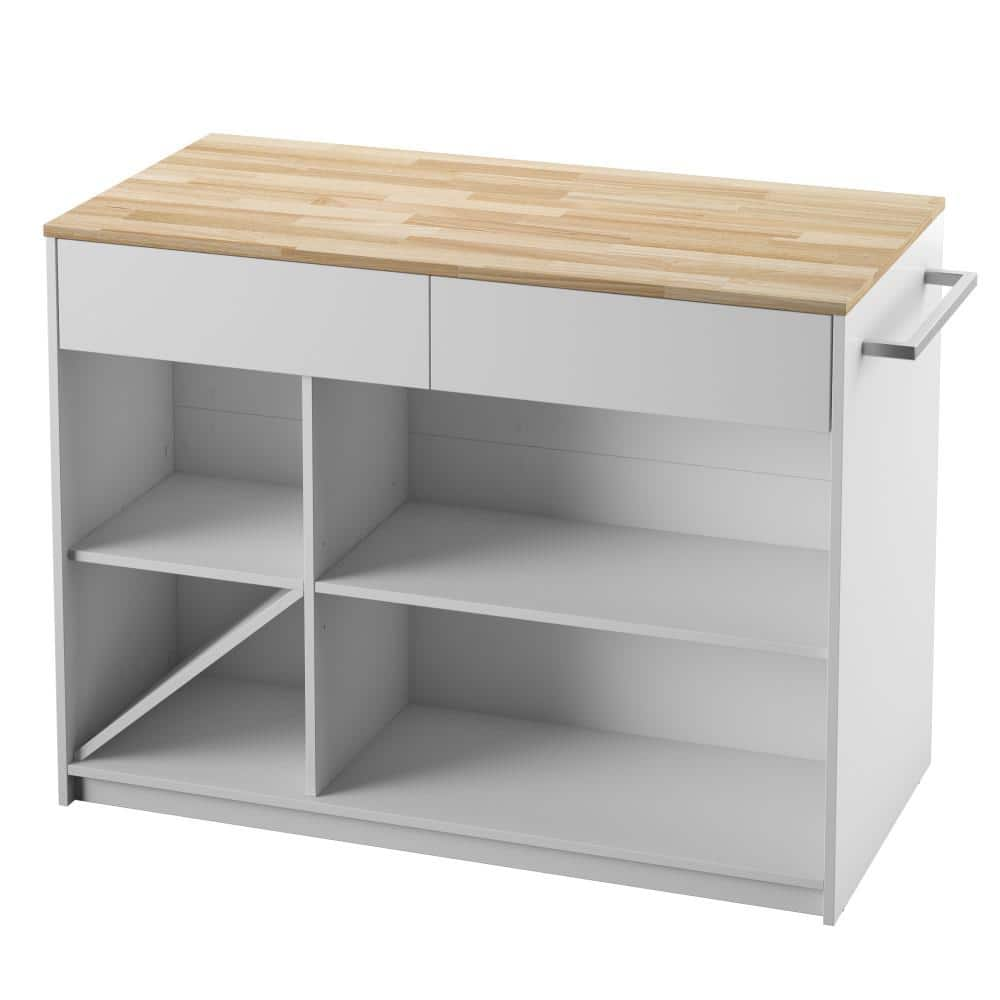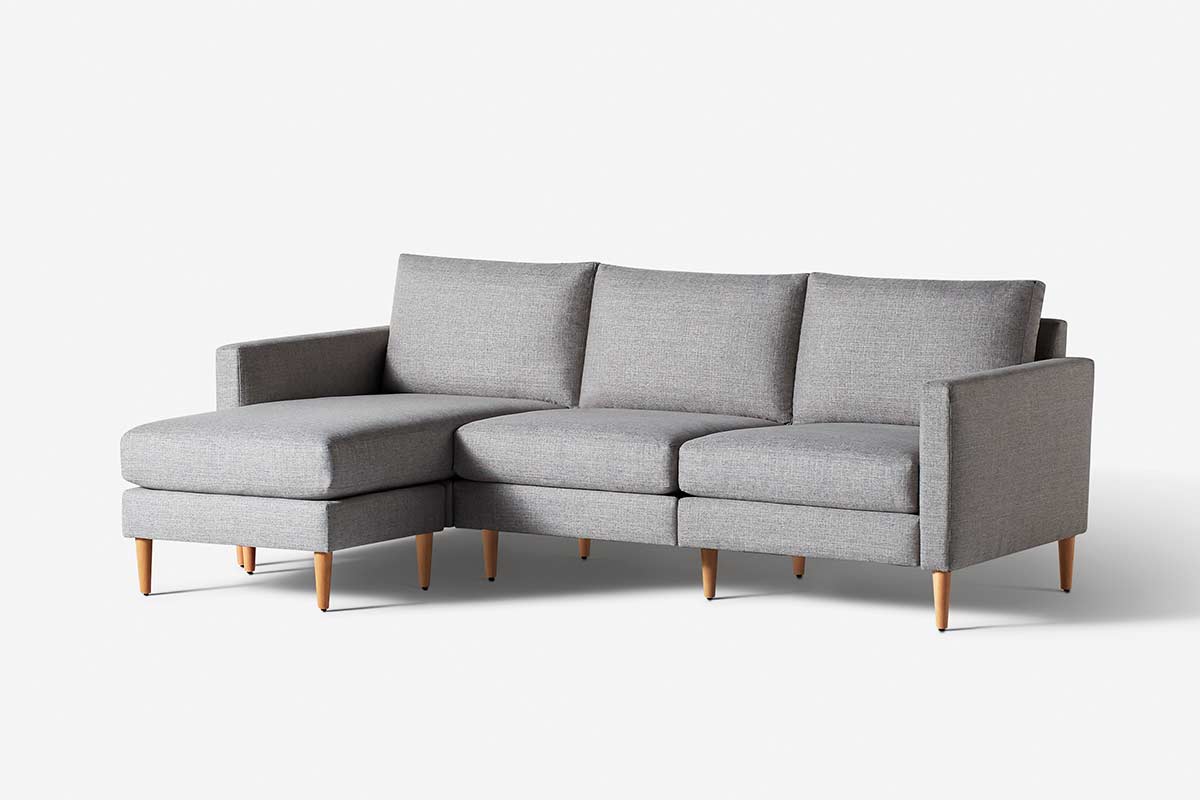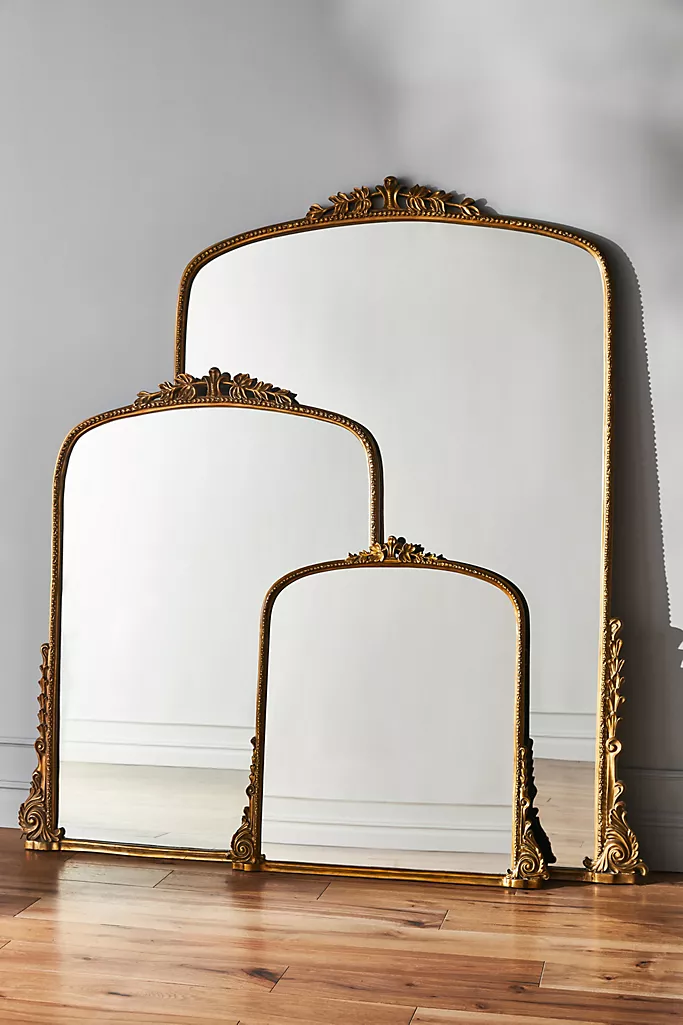Twin Star Home White Kitchen Island with Wine Shelves
2 upper drawers for small storage. 3 open, lower storage areas + wine bottle storage. Counter height work surface with space to tuck away bar stools.
This modern kitchen island is the perfect solution for adding more storage and prep space to your kitchen. It showcases open shelving on one side to accommodate extra pots, pans, or cookbooks, as well as a spot for wine storage. The diagonal shelving can hold up to 18 standard-size bottles of wine laying sideways but can also be removed if you choose to use the space for other items. Above the open shelves are two drawers where you can stow extra cooking utensils, spices, and more. The other side of the island is completely open and leaves plenty of room to tuck away your bar stools or have a seat while prepping meals. Complete your kitchen’s look by getting the matching bar stools.
- 2-upper drawers for added storage of smaller items such as cooking utensils and seasonings
- Open shelving to accommodate extra pots, pans, and cookbooks
- One large, open shelf can be adjusted to three different heights for flexible storage
- Diagonal shelving holds up to 18 standard-size bottles of wine laying sideways
- Counter height workspace for easy meal prep, mixing, and plating
- Open on 1-side with room to tuck away bar stools
Additional information
| Dimensions | H 35.5 in, W 47.5 in, D 23.5 in |
|---|---|
| Depth | Standard (21-36 in.) |
| Width | Standard (40-55 in.) |
| Manufacturer Warranty | 1-year limited warranty |






by Jessica
This is a knock out island! Just as pictured and very nice quality. Perfect size for an apartment or small eating/kitchen space. Follow the instructions and it’s very easy to put together – I did it by myself and it only took me about 2.5 hours. Very pleased and very happy with the quality and price of this item. Would buy again and would reccomend to my friends!
by Jamave
I absolutely love this kitchen island. It is so pretty. It has tons of storage . It matches my kitchen perfect. The counter top is nice and easy to clean. Lots of room to work with. It was very easy to put together had no issues. It is very sturdy and holds alot. Would definitely recommend if look for extra space or storage.
by Snerdy
I had been looking for a kitchen island for a while, but couldn’t seem to find a piece that fit and looked just right in my kitchen. I needed something we could eat at and also that had storage, but that wasn’t too “heavy” or big for the space. This piece is perfect! There’s enough room for two high-top chairs, my stand mixer, mixing bowls, wine bottles, silpats, cutting boards, and more. The drawers aren’t super-deep, but they have more than enough room for silverware, my chef’s knives, and all my serveware. It wasn’t incredibly difficult to put together but if you can get a helper it would be easier than doing it alone. The back is in two pieces and one end did not tighten as well as the other end, but once everything was assembled, the piece is sturdy. Love this island!
by Rans
Got this a few weeks ago and really like it I don’t like that it doesn’t have wheels on it which makes it hard to move but it is a lot better than the table that I had in my kitchen it was a little hard putting together but it created some extra storage space which comes in handy the top is made out of real wood wish all of it was instead of compressed saw dust
by Chris
Easy to build and very sturdy , beautiful piece for the kitchen.
by Samuel
Great island and quality is amazing.
by Crazy
I just love this inland it was very easy to put together and it is just the perfect thing in the kitchen to have I just love it it is a great piece to have if you are thinking about getting one you should get one you will love it as much as I do so go out and get one today you will love it too and it even has drawers in it.
by Karen
I love it! Its the perfect size for my kitchen. I love the shelves although I don’t need the wine section so I use the space differently. It was a little bit of a struggle to assemble . You definitely need a helper just for the weight alone. The box does weight at least 100-120 lbs. The finished product is beautiful.
by Spoile
I got this kitchen island about a month ago. Putting it together was a little tricky but once I got it figured out and put together I was ok. It is a beautiful kitchen island with lots of storage space. Overall I really like this piece just wish it had come already assembled. I would recommend reading through the instructions before starting to assemble.
by Cynthia
This is a very nice size kitchen island. I love the color and the storage. It fits perfectly in my kitchen. It was not hard to put together the assembly was easy to complete and is very sturdy. It matches my kitchen appliances well. Love it!! Very happy with the product thank you!! Overall experience I pleased.